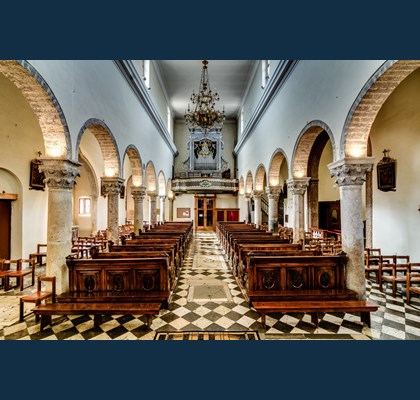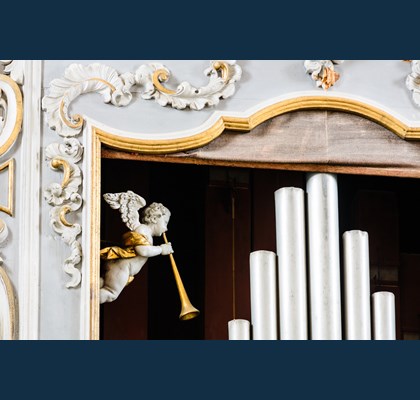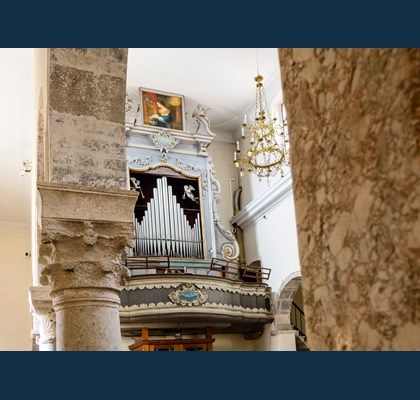Style period: baroque, classicism
Century: 19 A.D.
In 1815, the organ made in the famous Venetian workshop Callido was placed on the cathedral chorus. Gaetano Callido (1727 – 1813) learned the ropes with Petar Nakić (1694 – 1796) from Bulić near Benkovac, the founder of new Venetian-Dalmatian school of organ making, and he became independent in 1763. During his life he signed over 400 organs, and he was succeeded by his sons Agostino (1759 – 1826) and Antonio (1762 – 1841). Around 1830, Callido’s workshop was taken over by Pietro Bazzani under the name “Bazzani, successori Nachini e Callido”.
The Krk organ was made by Gaetano’s sons, who made certain alterations compared to the father’s construction.
The organ has a mechanical system with one manual and a pedal, and twenty-one registers. The keyboard scope in manual is C-g³, and in pedal C-c¹. It has a cubic casing with a wide opening for the pipes. As opposed from other organ in Venetian-Dalmatian school, this organ is richly decorated by luxuriously framed prospectus, two pairs of winged angels, side volutes, motifs of leaves and rocaille, garlands and cartouche with the inscription “IHTIS”. In the middle of the wreath there is the picture of St Cecilia playing the organ.
Despite numerous interventions on the construction, most of the original pipes have been preserved.
Besides on Krk, the organ made in the workshop Callido can be found on Cres, Veli Lošinj and Mali Lošinj.
Bibliography:
- Istarska enciklopedija, LZMK, 2008.
- Ruffatti, Francesco, The Diapason, 80/12, 1998.
- The Organ: An Encyclopedia, Editors Douglas Earl Bush, Richard Kassel, Psychology Press, 2006.





